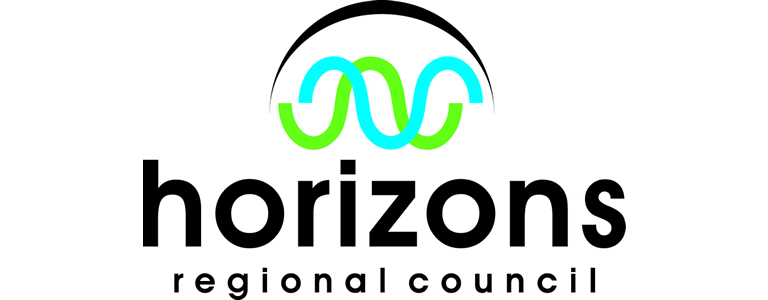
Fresh, clean water is part of our national identity, it is essential for maintain healthy flourishing communities. In the Manawatu-Whanganui region we enjoy access to many beautiful rivers, lakes and streams. These waterways provide us with drinking water for animals and people, and support the water requirements of agriculture, energy and industry. Our waterways are a place to enjoy on those long summer days, and home to numerous fish and insects. Ensuring these waterways are safe for swimming, consumption, fishing and recreation is a big part of what we do at Horizons.
In February 2017, the NZ Government announced its target of 90% of rivers and lakes being swimmable by the year 2040. Currently 72% of our rivers and lakes meet the swimmable standard with approximately 10,000km of waterways needing to undergo improvement to achieve the nations 90% target. Horizons Regional Council is one step ahead with a number of freshwater initiatives underway, and is already in the process of developing a strategy to meet the swimmability targets in our Region.
Horizons is responsible for managing, monitoring and reporting on our region's natural resources, including our waterways. With changing requirements and emerging pressures on natural resources, it is important that Horizons continues to review and optimise our monitoring network to ensure it remains fit for purpose.
As a council we seek continuous improvement to ensure our environmental monitoring programmes are well aligned with both national reporting requirements and our science monitoring and research objectives. Our aim is to ensure that monitoring programmes are both efficient and effective in their delivery and that the key objectives (identified in the appendix below) are met. This includes both surface water and groundwater physico-chemical monitoring, aquatic biological monitoring and assessments of water availability.
Problem Details
Our proposed challenge is to establish what an optimal (spatially representative) water quality sampling network would look like for each of our major freshwater monitoring programmes. Our monitoring programmes have a number of regional and national objectives they must meet, so our challenge is focussed on answering the following three key questions:
- What would an optimally designed and spatially representative regional monitoring network look like if it were designed from scratch to meet our objectives?
- Given our established sampling locations, can you identify gaps in the spatial coverage of our existing network or areas that are over-represented when compared to an optimal network design?
- What changes might be made to Horizon's monitoring network to better meet these objectives across the Region?
We can provide the following data for the Region
- Information on our current monitoring programmes and their objectives
- Hydrological information e.g. River network, catchments, rainfall, aquifer boundaries etc
- Geographical information e.g. topography, discharge locations, monitoring stations, geology, soils etc
- Consent information for water takes and discharges to water
Appendix: Policy information
The aim of our monitoring network is to ensure that:
- Each monitoring programme is fit for purpose, i.e. that monitoring samples are being taken from the right places, at the right time, following the correct protocols including those set out within the National Environmental Monitoring Standards (NEMS);
- Monitoring leads to key strategic outcomes such as water quality accounting, natural resources inventory and/or accounting for effects on environmental values; and
- Monitoring enables the measurement regional and national policy outcomes, such as alignment with requirements of the National Policy Statement for Freshwater Management (NPS-FM) and Horizons' Regional Policy and Plan (One Plan), along with objectives of the regional pest management strategies and other strategic resource management documents.
Currently we run a number of major monitoring programmes which exist to fulfil our regional and national objectives. These include: groundwater level and quality, lakes, estuarine and coastal, State of the Environment (surface water quality), discharge monitoring, sediment, swim spots / contact recreation, salt water intrusion, and biomonitoring (periphyton, cyanobacteria, fish, macroinvertebrates) programmes.
As a Regional Council we are continually striving to strike the right balance between making our natural resources available today while providing for the current and future needs of our environment. In reviewing our monitoring network we face similar challenges with regards to balancing competing needs with limited resources. Any changes to our monitoring network would need to be appropriately justified, cost effective and meet the various obligations we have to our community.
The key national and regional objectives in relation to monitoring which we aim to meet are as follows:
National Objectives
- State of the Environment Monitoring – This involves monitoring and reporting on how the physical, chemical and biological characteristics of the environment are changing over time. It is also used to identify emerging pressures.
- National Policy Statement Freshwater Management (NPS-FM) – the key actions of the NPS in relation to monitoring can be summarised as:
- Develop a monitoring plan that:
- establishes methods for monitoring progress towards - and the achievement of - a number of policies and objectives;
- identifies locations where monitoring will be undertaken that are representative of each delineated Freshwater Management Unit (FMU); and
- recognises the importance of long-term trends in monitoring results.
- Establish, operate and maintain a freshwater quality and quantity accounting system.
- Develop a monitoring plan that:
- Contribute to National Monitoring Programmes – Including the National Pesticide Survey, National Age Tracer Survey, and National Groundwater Monitoring Programme.
Regional Objectives
- Inform and measure response of the environmental response to policy implementation;
- Inform non-regulatory programme development and implementation;
- Understand and report on state and trend on water quality sites depicting the cumulative catchment (zone) outputs;
- Identify areas of emerging pressure on our Region's water resource;
- Understand the effects of major point source discharges on water quality; and
- Meet Long Term Plan (LTP) performance measure to "track the health of the Region's water resource".
